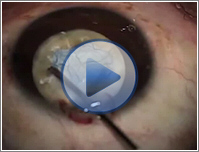Newsletter Issue 8 | Jun 2011
Florida Eye News and Views
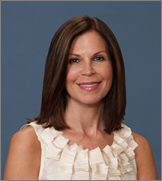
Dear Readers:
Welcome to our summer newsletter. As always we have information to share, but before we get started, we just wanted to take a few moments and remind everyone that while July is officially UV Safety Month, here in Florida it’s always the right time to wear sunglasses, so we hope you are wearing yours (and a hat)! It’s also important to make sure your glasses block 99 to 100 percent of UV-A and UV-B rays. Remember — sunglasses don’t have to be expensive to perform this job.
In this issue you’ll find updated information on our current national clinical studies, including a letter that was recently sent out by Dr. Katz regarding our newest trial. You’ll also find a recap on Dr. Schechter’s winning a top video award from the ASCRS (you can catch the video on our site), an informative interview with Diabetes and Nutrition Expert Cathy Edelman, MS,RD, LD/N,CDE, some interesting facts about Botox®, both medical and cosmetic, and you’ll read about how Florida Eye patient Norma Scotland’s quest for better vision resulted in just that — and so much more!
We’ve included new continuing education information, our questions and answers section and some more facts about the dangers of UV rays, as well as our final tidbits, where you’ll see our Florida Eye family continues to grow.
Have a wonderful summer!

Gwen Cohan
Director of Marketing & Public Relations
In this Issue:
National Clinical Trial Information »
An Award for Dr. Barry Schechter »
Diabetes & Nutrition: Divorce Your Diet — An Interview with Author Cathy Edelman »
Interesting Facts About Botox »
Patient Success Story from Dr. Peter A.D. Rubin »
Continuing Education Seminars »
National Clinical Trial Information
From Dr. Randy Katz:
Dear Doctor:
I am writing to you today to inform you of medical research taking place in our community. We are evaluating an investigational medication, FCFD4514S. The primary objectives of this study are to evaluate the ocular and systemic safety and tolerability of FCFD4514S administered intravitreally to patients with Geographic Atrophy (dry AMD).
I have been selected as one of the physicians to conduct this research, and wanted to inform you of this study in the event that a patient in your care may qualify for this study. Please note that I am solely interested in assisting your patient through this clinical trial, realizing their return to your care is imperative. I am therefore happy to communicate with you during the study period, given the patient’s consent.
I am specifically looking for men and women, ages 60 – 89, with bilateral geographic atrophy secondary to Age-Related Macular Degeneration in the absence of choroidal neovascularization. Additional information on this study may be found on the www.clinicaltrials.gov website under the Identifier NCT01229215.
If you have patients that may qualify and be interested in participating in this study, please have them call Debbie Rankin at (561) 736-5055.
Sincerely,
Randy Katz, M.D.
Principal Investigator
More Study Information
From Dr. Randy Katz:
We currently have two Wet Macular Degeneration studies that are ongoing involving Lucentis plus a study drug. Treatment naïve with vision of 20/63 to 20/200.
We are currently participating in one clinical trial for Dry ARMD; must have GA in both eyes and no prior WET AMD or treatment in either eye.
A new study for Phase 4 Lucentis has started, newly diagnosed, BRVO, CRVO or HRVO (different types of RVO). It will last 15 months, study med for free and fellow eye treatment for free if needed. No previous treatment in the study eye with anti VEGF therapy, no AMD, wet or dry, no laser or steroids within 4 months. VA between 20/40 and 20/320.
. . . . . . . . . .
From Dr. Barry Schechter:
Dry Eye, Cataract Surgery
We are currently enrolling patients in several new studies in a variety of eye-concern areas. The purpose of all of the studies is to evaluate new and promising ways to treat and alleviate these conditions.
Mild to Moderate Dry Eye
We are evaluating a topical NSAID (based upon my prior research) for a leading pharmaceutical corporation.
Cataract Surgery Patients
For new cataract patients who are having cataract surgery we are evaluating visco elastic vs. saline irrigation to close cataract surgery wounds.
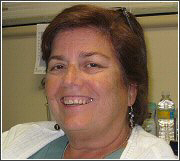
For More Information
For more information please contact Debbie Rankin, study coordinator at 561-736-5055 or via email at [email protected].
An Award for Dr. Barry Schechter
Lights, Camera, Action!
Dr. Schechter wins video award for
“World’s Hardest Cataract.” CONGRATULATIONS
Dr. Schechter!!
Dr. Schechter recently won a top video award for “World’s Hardest Cataract” from the American Society for Cataract and Refractive Surgery (ASCRS). His video was one of ten chosen out of 170 applicants. Florida Eye’s Chief Surgical Technician Tracy Hickman assisted Dr. Schechter during the procedure. The video as produced by the Institute’s IT Director, Richard Zucarro.
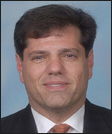
This year, just over 6700 professional attendees from the United States and around the world registered for the 2011 ASCRS Symposium which was held in San Diego, CA. Attendees were able to choose from approximately 700 scientific papers, 20 symposia, 112 physician courses, 150 films, 300 posters, 6 skills transfer sessions, 150 practice management courses, and 48 technicians and nurses program presentations.
ASCRS is one of the two premier societies for ophthalmology in the world. “A co-investigator presented Dr Schechter’s research on innovations in “sutureless cataract wound closure.”
Diabetes & Nutrition
Divorce Your Diet — An Interview with Author Cathy Edelman
Dr. Katz is always stressing the importance of annual eye exams for diabetics, and in our newsletters we often include information about the latest findings, clinical trials and other news regarding medications and advancements in treating diabetic retinopathy. In this issue we thought it might be nice to focus on another aspect of diabetic patient concerns — diet and nutrition.
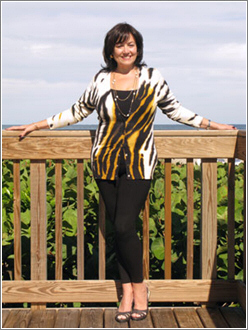
Enter Cathy Edelman, a Registered Dietitian with an advanced Masters degree in nutrition, AND a Certified Diabetes Educator. A victim of years of yo-yo dieting and a diabetic herself, Edelman knows firsthand what it feels like to have to take control of your life and rethink the way you look at food, and in her book, Divorce Your Diet, she shares her personal journey and professional knowledge, laying out not a food plan but a way of life that works for diabetics and non-diabetics alike.
Edelman spent her post adolescent life on a personal quest. Early in her career she thought she had the answers, teaching medical students and patients alike. Then life happened. Two kids and 70 extra pounds later she found herself in a downward spiral. No matter what she did, she kept finding herself back where she started — only worse. She tried everything; diets, pills, “diet” doctors, hypnosis, acupuncture, you name it! Nothing solved her puzzle, and her predicament continued to torment her. Then she was diagnosed diabetic and everything changed.
“When I was diagnosed diabetic, I focused on my diabetes and obesity,” says Edelman. “I started thinking about my condition as a disease, not a social condition, and I got serious. And by addressing diabetes as a disease, I automatically addressed the obesity.”
“Diabetics need to be in the driver’s seat and in control of their lives,” says Edelman. “Teaming up with a friend or family member for support — diabetic or not — is a good idea, if you need the extra encouragement.”
Edelman’s book was published this past January and the reviews have been extremely favorable. “I think people who have weight issues can relate to me not only as a professional but as a person who has been in their shoes,” says Edelman. “Add to that the fact that, like more than 26 million Americans, I’m living with diabetes. Well I’m not just telling readers how they should live and what they should change about their dieting habits. I’m doing it too — and loving the results.”
Review of Divorce Your Diet
Divorce Your Diet is simple and straightforward. Edelman does an excellent job of explaining the biological processes that make eating well and exercising regularly so important. Her writing is gentle and her message is full of compassion. Judgement and criticism are discouraged at all times. Many readers will find this book the first step in a liberating and life-changing journey to better health and happiness.”
— Catherine Thureson, ForeWord Clarion Review
Cathy’s Lifestyle Tips for Diabetics:
- Lose 5-10% of your body weight & practice healthy eating.
- Increase your exercise — start out with just five minutes a day of just walking, & gradually increase the time to 30 minutes a day, five days a week. You can break up the walks into two or three walks throughout the day as well.
- Learn stress management techniques – deep breathing, yoga, listen to music, read – anything that is calming & soothing.
- Take medication regularly & on time.
“These tips work well for everyone who wants to take control of their lives. The only difference for diabetics is meal timing & hypoglycemic meal management.”
— Cathy Edelman, MS, RD, LD/N, CDE
A portion of every book sold is donated to The American Diabetes Association.
All You Ever Wanted to Know About Botox and More

Way before Botox was ever used to erase wrinkles, it was used specifically for medical purposes. At Florida Eye, the doctors have been using Botox for many years to treat a variety of debilitating ophthalmologic conditions, providing much needed relief to a wide variety of patients, children (twelve and older) and adults. Just for fun, below is some interesting information from Wikipedia about Botox, such as who invented this miracle in a bottle. You might be surprised!
Did you know it was an ophthalmologist?
In the late 1960s Alan Scott, M.D., a San Francisco ophthalmologist, and Edward Schantz were the first to work on a standardized botulinum toxin preparation for therapeutic purposes. By 1973, Scott used botulinum toxin type A (BTX-A) in monkey experiments, and, in 1980, he officially used BTX-A for the first time in humans to treat strabismus “crossed eyes,” a condition in which the eyes are not properly aligned with each other, and “uncontrollable blinking” (blepharospasm).In 1993, Pasricha and colleagues showed that botulinum toxin could be used for the treatment of achalasia (a spasm of the lower esophageal sphincter), while in 1994 Bushara and Park showed that botulinum toxin injections inhibit sweating. These were the first demonstrations of an autonomic use of BTX-A in humans.
Blepharospasm and Strabismus
In the early 1980s, university-based ophthalmologists in the U.S.A. and Canada further refined the use of botulinum toxin as a therapeutic agent. By 1985, a scientific protocol of injection sites and dosage had been empirically determined for treatment of blepharospasm and strabismus. Side effects were deemed to be rare, mild and treatable. The beneficial effects of the injection lasted only 4–6 months. Thus, blepharospasm patients required re-injection two or three times a year.
In 1986, Scott’s micro-manufacturer and distributor of Botox was no longer able to supply the drug because of an inability to obtain product liability insurance. Patients became desperate as supplies of Botox were gradually consumed, forcing him to abandon patients who would have been due for their next injection. For a period of four months American blepharospasm patients had to arrange to have their injections performed by participating doctors at Canadian eye centers until the liability issues could be resolved.
And Canada is where, just three years later, Botox was re-introduced as a cosmetic solution for wrinkles.

The cosmetic effect of BTX-A on wrinkles was originally documented by a plastic surgeon from Sacramento, California, Dr. Richard Clark, and published in the journal Plastic and Reconstructive Surgery in 1989. Canadian husband and wife ophthalmologist and dermatologist physicians Carruthers JD and Carruthers JA were the first to publish a study on BTX-A for the treatment of glabellar frown lines in 1992. Similar effects had reportedly been observed by a number of independent groups (Brin, and the Columbia University group).
After formal trials, on April 12, 2002, the FDA announced regulatory approval of botulinum protein type A (Botox Cosmetic) to temporarily improve the appearance of moderate-to-severe frown lines between the eyebrows (glabellar lines). Subsequently, cosmetic use of botulinum protein type A has become widespread with many celebrities (and everyday folks alike!) viewing it as less intrusive and/or artificial than other types of plastic surgery. The results of cosmetic procedures vary but can last up to eight months.
At Florida Eye, Dr. Schechter has been using Botox Cosmetic for the last four years. “It was a natural progression,” says Dr. Schechter. Patients know we have it in the office and have been using it for medical conditions for years. “It was really just a matter of time before our patients started asking for Botox (as well as Juvederm XC) for cosmetic reasons.”
And it’s not just the patients at Florida Eye who are asking for Botox.
“As an ophthalmology sales rep covering the tri-county area, I have many options when choosing a doctor for my Botox treatments,” says Lisa K. “I chose Dr. Schechter because of his extensive knowledge of injectables as well as his proven results. Thanks to Dr. Schechter I look 29 instead of 39! I could go anywhere for my Botox, but I wouldn’t trust my face to any other doctor.”

Patient Success Story from Dr. Peter A.D. Rubin
Dr. Peter Rubin, Ophthalmic Plastics & Orbital Surgery
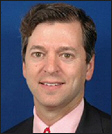
When Florida Eye patient Norma Scotland came to see Dr. Jason Gorscak for her annual eye exam last year, she mentioned to him that she was having problems with her peripheral vision. “My upper eyelids were so droopy they were overlapping on the sides and I really couldn’t see well,” recalls Norma. “My eyelids were hanging so much that it became second nature for me to raise my eyebrows all the time — sometimes even with my hands, so I could see better.”
Dr. Gorscak recommended to Norma that she make an appointment with Ophthalmic Plastics and Orbital Surgery Specialist Dr. Peter Rubin, for further evaluation and to discuss the possibility of an upper blepharoplasty procedure — the surgical removal of excess skin and fat from the upper lids.
Although very nervous about the idea, her droopy lids bothered her enough for Norma to make the appointment for an exam with Dr. Rubin. “I did my research on Dr. Rubin and liked what I read. When I met him he put me at ease immediately. He explained the procedure thoroughly and he answered every question my husband and I came up with,” says Norma.
A few months later Norma underwent the upper blepharoplasty. “I was absolutely thrilled with the results,” says Norma. “I can see so much better and of course the bonus is that I love the way I look.”
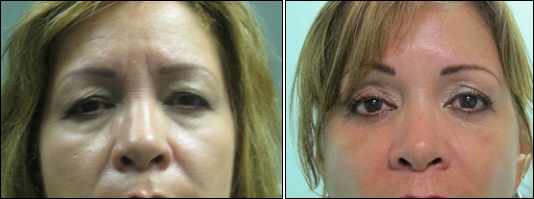
“Norma was the perfect candidate for the procedure,” says Dr. Rubin, which he performed at Florida Eye’s Boynton Beach Ambulatory Surgery Center. “Her surgery took less than an hour, which is the norm — most upper lid procedures take 30-60 minutes. Recovery involves two weeks of swelling and mild bruising and about three months for everything to heal. “And no general anasthesia is involved — it’s local with intravenous sedation, making it very easy to have the procedure and go home the same day,” adds Dr. Rubin.
Norma concurs with Dr. Rubin. “All I experienced in the days that followed was a little bruising. It felt like there was an eyelash in my eye for two days. As for pain, I didn’t even need a Tylenol. The only medication I used was ointment for the incisions.
As a matter of fact, Norma was so pleased with the surgery that the previous ‘Nervous Nelly’ opted to have her lower lids done with Dr. Rubin six months later. A surgical approach that avoids a skin incision in the lower lid (tranconjunctival approach) was used in her case. The lower lid procedure also takes less than an hour to perform, and could be combined with a simultaneous upper blepharoplasty in selected cases. Complete recovery time of the lower lids alone, without the skin incision is quicker, about six weeks.
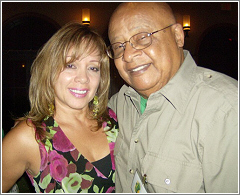
Norma’s husband Tom says his wife was gorgeous before the surgery, but even he admits the results are phenomenal. “Dr. Rubin did a fantastic job!” says Tom. Obviously Norma’s friends think so too. Several of them have been in to see Dr. Rubin since her surgery, and not because of any peripheral vision issues! For Norma, the finishing touch was some, Botox®which Dr. Rubin administered when she was well-healed. “I’d say I’m pretty set for now,” says Norma, who loves her new look. “It’s the best feeling to not only see better, but to look better as well.
Upcoming Continuing Education Seminars
Our upcoming continuing educational seminars will start up once again this fall. Each will be for two credits and will be certified by the Florida Board of Optometry and COPE. Times and venues will be announced at a later date. All invitations are sent out vie email, so if you know of a fellow Palm Beach County optometrist who would like to receive an invitation to our seminars but may not be on our email list, please share this information with them and have them contact [email protected].
- Tuesday, October 11, 2011 — Boynton Beach
- Wednesday, January 18th, 2012 — Boca Raton
- Wednesday, April 25th, 2012 — location to be announced
Eye Care Questions
Dear Dr. Katz:
I was recently diagnosed with early onset diabetes, and my vision is blurry at times. What does this mean and should I get in for an eye exam soon?
Answer

I can’t stress enough the importance of annual eye exams for diabetics. Once you are diagnosed, an annual ophthalmologic exam should become a part of your normal annual routine. With regular exams any changes in your vision will be addressed immediately, and the appropriate steps taken to manage those changes. The old adage “an ounce of prevention is worth a pound of cure” is very true.
Dear Dr. Gorscak:
My 61 year old husband is almost blind from diabetes related glaucoma. Are there any surgical treatments available to return his vision?
Answer
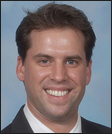
Unfortunately, vision loss from glaucoma is irreversible. However, it is important that your husband or any individual with diabetes and glaucoma maintain regular complete eye care. It may be that glasses, cataract surgery, treatment for diabetic macular edema or bleeding may be necessary which may improve the vision.
Dear Dr. Schechter:
What can I expect to occur after cataract surgery? I have heard horror stories and I am a little uneasy about the surgery.
Answer

In the vast majority of cases, the postoperative course is very comfortable, so discomfort should be minimal. Most patients don’t require pain medications and at most have a slight foreign body feeling from the incision which usually clears in a few hours. Vision the next day can be excellent or at times cloudy, depending on the amount of swelling (edema) in the cornea. This swelling usually clears in a few days, and most patients see quite well in a few days. Patients with mild cataracts generally have very little swelling. Very dense cataracts require more energy to remove, and this can produce more swelling in the cornea.
Dear Dr. Friedman:
Can you explain the risks of amblyopia for a child with symmetrical congenital genetic cataracts not getting surgery? My friend’s one year old daughter was recently diagnosed with congenital cataracts in both eyes. What can happen if she doesn’t have surgery?
Answer
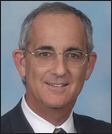
Some cataracts are visually significant while others are not. At age one it is hard to know for sure because we are not able to measure vision, so we must rely on experience and apparent function. The risks of early surgery are balanced by the risks of delay so each case must be looked at individually by each patient’s ophthalmologist, including your friend’s daughter.
July is UV Safety Month
But Wear Your Sunglasses Every Day Because »

- Long term exposure to the sun can lead to potentially blinding conditions such as cataracts and macular degeneration.
- Reflected sunlight — light that bounces off water or even snow, for example — can be the most dangerous type of UV (ultraviolet) light because it is intensified.
- Your eyes can also receive a sun burn known as photokeratitis, which can cause pain, redness and tearing.
- UV light sources other than the sun, such as welding lamps or tanning booths can also harm your eyes.
Final Tidbits
Baby Announcements at Florida Eye!
Congratulations to Florida Eye’s two newest mommies and their families on the recent births of their adorable babies!!
Florida Eye technician Abby Alvarez and Eric Eng welcomed Reece Alvarado Eng on April 4, 2011.

And Medical Billing staffer Chant’e Herron and Christopher Sanders followed closely with Zion Christopher Sanders on May 18, 2011.
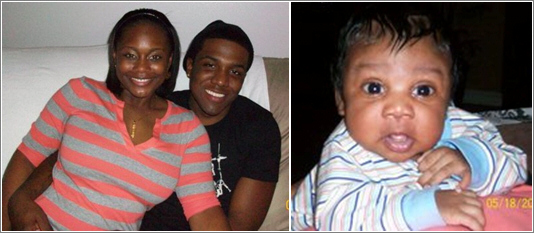
Cosmetic Specials
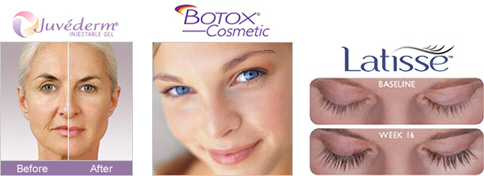
Visit Dr. Schechter’s cosmetic specials website (www.drbarryschechter.com) to find out about special price savings on cosmetic procedures.


